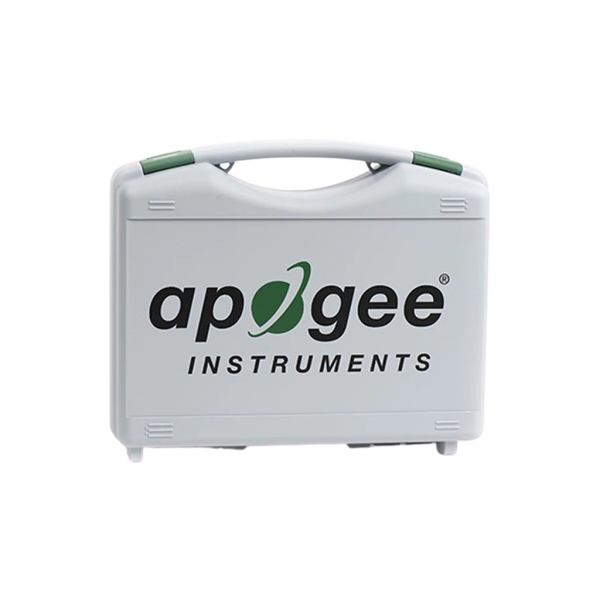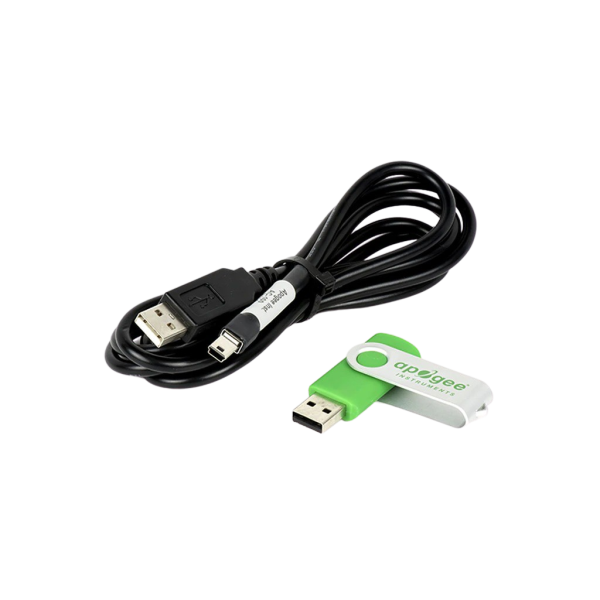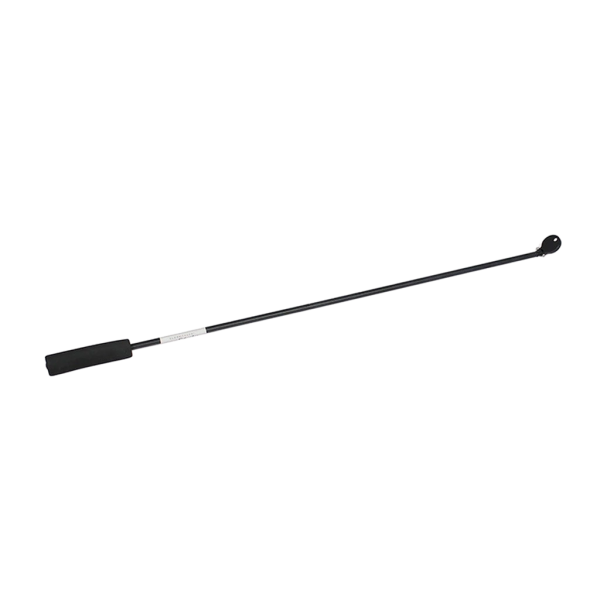Apogee MQ-650 ePAR Underwater Meter
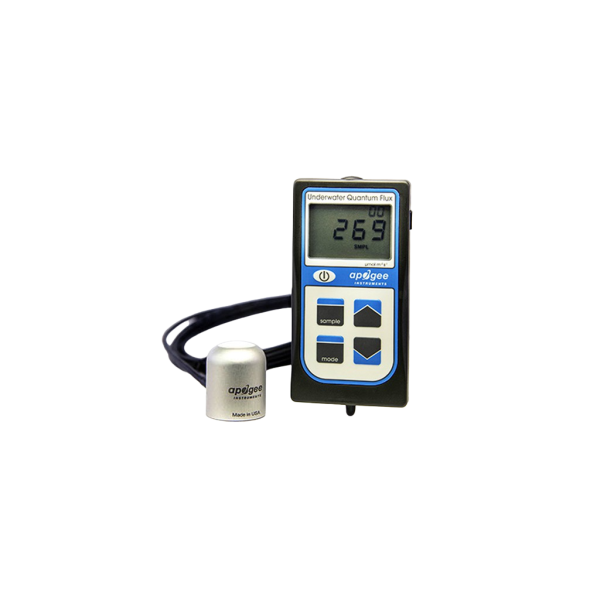
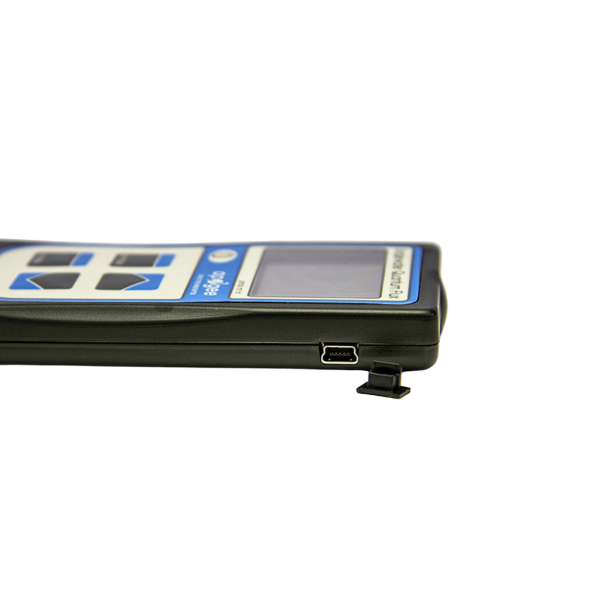
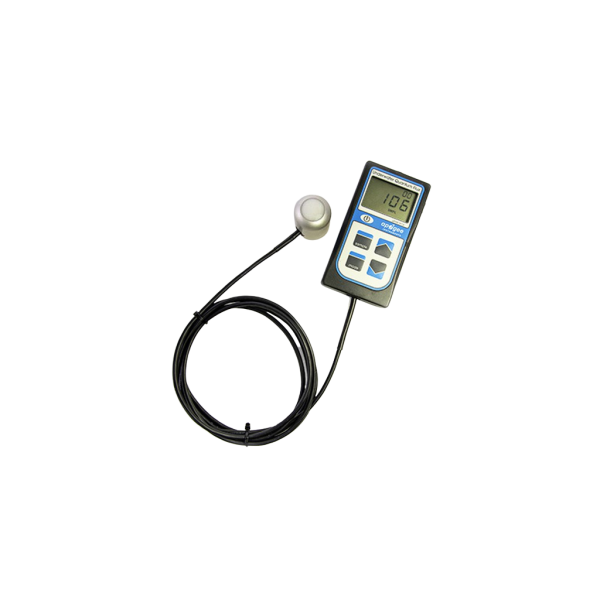
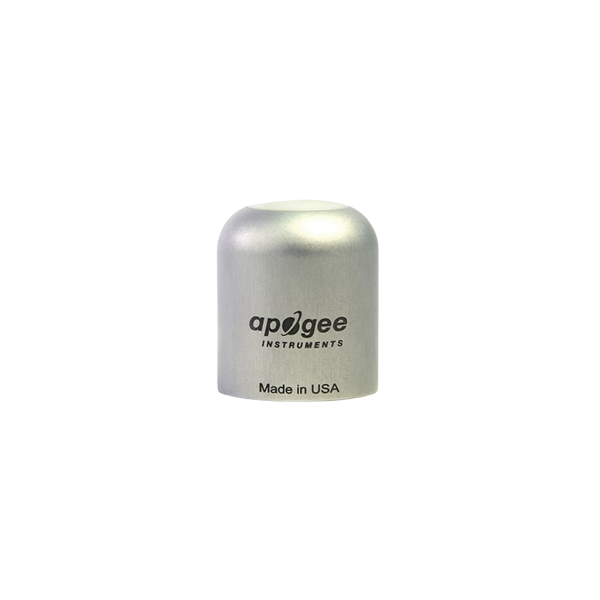
Extended PAR measurements
- 400 - 750 nm
- waterproof sensor and cable
- anodized aluminum body with acrylic diffuser
- accurate underwater measurements for all lights
- Manufacturer:Apogee Instruments
- SKU:1507135
The MQ-650 ePAR meter is designed for underwater extended PAR measurements (400-750 nm) and already applies the sensor's immersion effect correction factor to the meter readings through firmware. The meter provides excellent measurements under all light sources, including LEDs. The meter consists of a waterproof quantum sensor attached via waterproof cable to a handheld meter. The waterproof sensor incorporates a blue-enhanced silicon photodiode and custom optical filters with a rugged, anodized aluminum body with acrylic diffuser. The underwater quantum sensor is typically used in salt water aquariums where corals are grown. Note: The handheld meter is not waterproof, only the sensor and cable are waterproof.
Sample and log mode includedThe meter has a sample and log mode, and will record an integrated daily total in mol m-2 d-1. Sample mode will record up to 99 manual measurements. Log mode will power the meter on/off to make a measurement every 30 seconds. Every 30 minutes the meter will average the sixty 30 second measurements and record the averaged value to memory. The meter can store up to 99 averages, once full it will start to overwrite the oldest measurement with new ones. An integrated daily total will be recorded from the 48 averaged measurements (making a 24 hr period). Sample and log measurements can be reviewed on the LCD display or by downloading the data to a computer, however, the integrated daily total can only be viewed by downloading the data to a computer.
Deployment and Installation
Apogee MQ series quantum meters are designed for spot-check measurements, and calculation of daily light integral (DLI; total number of photons incident on a planar surface over the course of a day) through the built-in logging feature. To accurately measure PFFD incident on a horizontal surface, the sensor must be level. The AL-100 accessory leveling plate is recommended for use with the MQ-510 to ensure the sensor is level when attached to a cross-arm. The bubble-level in the plate makes leveling simple and accurate.
The AM-320 Saltwater Submersible Sensor Wand accessory incorporates a mounting fixture at the end of a 40 inch segmented fiberglass wand and is well-suited for saltwater use. The wand allows the user to place the sensor in hard reach areas such as aquariums.
Operation and Measurement
MQ series quantum meters are designed with a user-friendly interface allowing quick and easy measurements.
To power the meter, slide the included battery (CR2320) into the battery holder, after removing the battery door from the meter’s back panel. The positive side (designated by a “+” sign) should be facing out from the meter circuit board.
- Press the power button to activate the LCD display. After two minutes of non-activity the meter will revert to sleep mode and the display will shut off to conserve battery life.
- Press the mode button to access the main menu, where manual or automatic logging are selected, and where the meter can be reset.
- Press the sample button to log a reading while taking manual measurements.
- Press the up button to make selections in the main menu. This button is also used to view and scroll through the logged measurements on the LCD display.
- Press the down button to make selections in the main menu. This button is also used to view and scroll through the logged measurements on the LCD display.
The LCD display consists of the total number of logged measurements in the upper right hand corner, the real-time PPFD value in the center, and the selected menu options along the bottom.
Logging: To choose between manual or automatic logging, push the mode button once and use the up/down buttons to make the appropriate selection (SMPL or LOG). Once the desired mode is blinking, press the mode button two more times to exit the menu. When in SMPL mode press the sample button to record up to 99 manual measurements (a counter in the upper right hand corner of the LCD display indicates the total number of saved measurements). When in LOG mode the meter will power on/off to make a measurement every 30 seconds. Every 30 minutes the meter will average the sixty 30 second measurements and record the averaged value to memory. The meter can store up to 99 averages and will start to overwrite the oldest measurement once there are 99 measurements. Every 48 averaged measurements (making a 24 hour period), the meter will also store an integrated daily total in moles per meter squared per day (mol m-2 d-1).
Reset: To reset the meter, in either SMPL or LOG mode, push the mode button three times (RUN should be blinking), then while pressing the down button, press the mode button once. This will erase all of the saved measurements in memory, but only for the selected mode. That is, performing a reset when in SMPL mode will only erase the manual measurements and performing a reset when in LOG mode will only erase the automatic measurements.
Review/Download Data: Each of the logged measurements in either SMPL or LOG mode can be reviewed on the LCD display by pressing the up/down buttons. To exit and return to the real-time readings, press the sample button. Note that the integrated daily total values are not accessible through the LCD and can only be viewed by downloading to a computer.
Downloading the stored measurements will require the AC-100 communication cable and software (sold separately). The meter outputs data using the UART protocol and requires the AC-100 to convert from UART to USB, so standard USB cables will not work. Set up instructions and software can be downloaded here from the Apogee website.
Immersion Effect Correction Factor
When a radiation sensor is submerged in water, more of the incident radiation is backscattered out of the diffuser than when the sensor is in air (Smith, 1969; Tyler and Smith, 1970). This phenomenon is caused by the difference in the refractive index for air (1.00) and water (1.33), and is called the immersion effect. Without correction for the immersion effect, radiation sensors calibrated in air can only provide relative values underwater (Smith, 1969; Tyler and Smith, 1970). Immersion effect correction factors can be derived by making measurements in air and at multiple water depths at a constant distance from a lamp in a controlled laboratory setting.
The MQ-510 sensor has an immersion effect correction factor of 1.32. The immersion effect correction factor is already accounted for in the MQ-510 meter firmware so there is no need to apply the correction factor to your measurements. If you wish to use your meter to make measurements in air, simply divide the measured number by the immersion effect (1.32).
When making underwater measurements, only the sensor and cable can go in the water. The handheld meter is not waterproof and must not get wet. If the meter might get wet from splashing, we recommend placing it in a plastic bag or other container to help protect it from accidentally getting wet.
Further information on underwater measurements and the immersion effect can be found on the Apogee webpage.
| Dimensions (LxWxH): | 126 x 70 x 24 mm |
| Measurement Range: | 0 to 4000 µmol mˉ² sˉ¹ |
| Spectral Range: | 400 to 750 nm ± 5 nm (wavelengths where responsis greater than 50 %) |
| Long-term Drift (Non-stability): | Less than 2 % per year |
| Response Time: | Less than 1 ms |
| Spectral Selectivity: | Less than 10 % from 412 to 682 nm ± 5 nm |
| Operating Environment: | 0° to 50° C, less than 90 % non-condesing relative humidity up to 30° C, less than 70 % non-condensing relative humidity from 30° to 50° C; separate sensors can be submerged in water up to depths of 30 m. |
| Sensor Dimensions: | 30,5 mm diameter, 37 mm height |
| Cable: | 2 m of two conductor, shielded, twisted-pair wire with santoprene rubber jacket (high water resistance, high UV stability, flexibility in cold conditions), additional cable available. |
| The handheld meter is not waterproof, only the sensor and cable are waterproof. |
